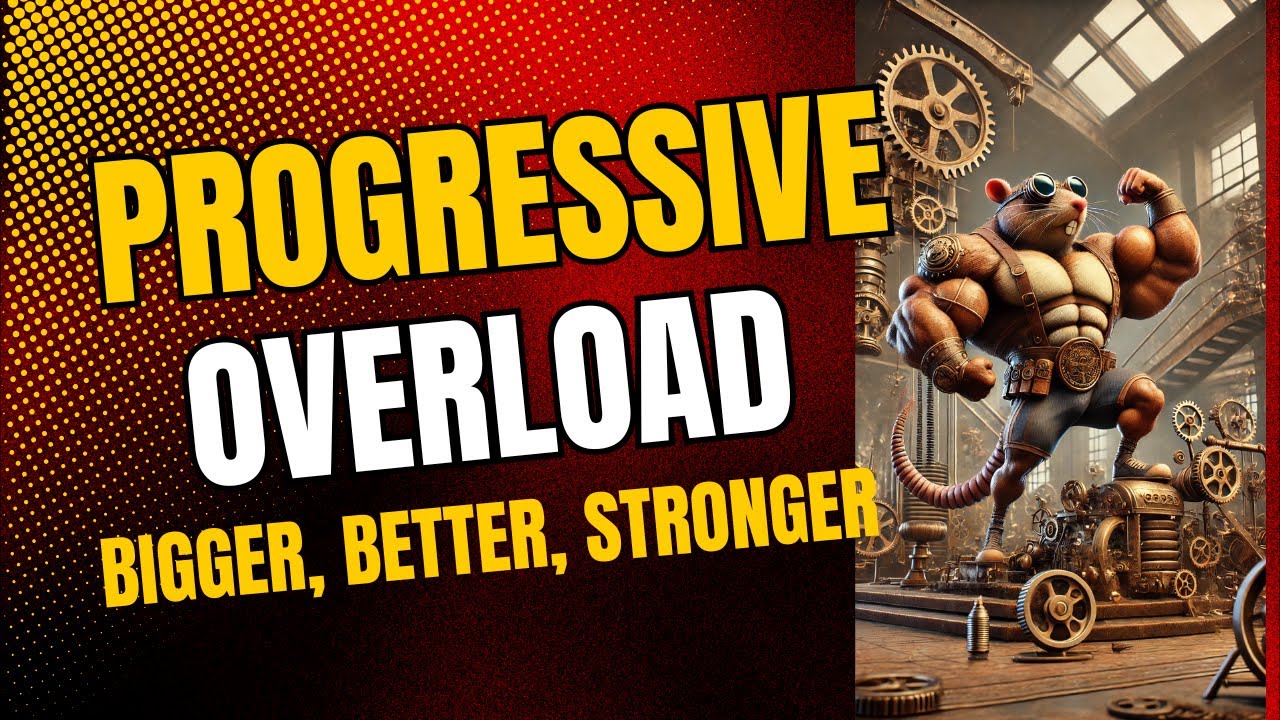Weight Lifting Workout Routines Thoughts?
Weight lifting is a great way to get stronger and stay healthy. It helps build muscles, makes you feel more energetic, and improves your overall fitness. With good weight lifting workout routines, you can target different muscles in your body and get great results. Whether you’re a beginner or someone with more experience, weight lifting workouts can be adjusted to fit your needs. Learning proper techniques in weight lifting training helps prevent injuries and makes sure you’re doing each weight lifting exercise the right way.
Starting a new fitness journey with weight lifting workout routines can be exciting, but it’s important to start slow and stay consistent. Weight lifting training helps you gradually increase your strength over time. Each weight lifting exercise works a different part of your body, helping you become stronger and healthier. By sticking to your routine, you will see improvements in both your strength and endurance.
Introduction to Weight Lifting.
Benefits of weight lifting workouts for overall fitness.
Weight lifting workouts offer numerous benefits for overall fitness. They help build strength and muscle, which improves your body’s ability to perform daily tasks. Weight lifting also boosts metabolism and burns calories, making it an effective way to manage weight. Additionally, these workouts support strong bones and joints, promoting better long-term health and reducing the risk of injury. Incorporating weight lifting into your routine leads to improved strength, a faster metabolism, and a healthier body.
Builds Strength and Muscle.
Weight lifting workout routines help you build strength and muscle over time. Each weight lifting exercise targets specific muscles, making them stronger with regular practice. As you continue with weight lifting workouts, your muscles grow, and your overall strength improves. This type of weight lifting training helps you lift heavier weights and complete everyday tasks with ease.
In addition to building muscle, weight lifting workout routines improve your posture and balance. Strong muscles support your body, making it easier to stand and move correctly. Regular weight lifting workouts also make your core stronger, which helps protect your spine. With consistent weight lifting training, you reduce the risk of injuries in everyday life.
Weight lifting exercise is important for both children and adults. It helps you build a strong foundation of muscle that supports all types of physical activities. Whether you enjoy sports, running, or hiking, weight lifting workout routines can help improve your performance. Strong muscles also protect your joints, making movement safer and easier.
Improves Metabolism and Burns Calories.
Weight lifting workouts are a great way to boost your metabolism and burn more calories. When you follow weight lifting workout routines, your body works harder, even when you’re not exercising. This increase in energy use helps you burn more calories throughout the day. Regular weight lifting training can also help you lose fat while building muscle.
During each weight lifting exercise, your muscles break down and rebuild, which requires energy. This process speeds up your metabolism and helps you burn fat faster. Weight lifting workout routines are a great way to stay fit and healthy while improving your body’s ability to burn calories. Over time, you’ll see improvements in your overall fitness.
By including weight lifting workouts in your routine, you can maintain a healthy weight. The muscles you build help you stay lean and active. Consistent weight lifting training makes it easier to stay in shape and reach your fitness goals. It’s a fun and rewarding way to take control of your health.
Supports Strong Bones and Joints.
Weight lifting workout routines are great for building stronger bones and joints. Each weight lifting exercise puts stress on your bones, making them stronger over time. This helps prevent bone diseases like osteoporosis, which can make bones weak and brittle. Weight lifting training is important for people of all ages, especially as they get older.
Regular weight lifting workouts also help keep your joints flexible and strong. Strong muscles around your joints give them extra support, reducing the risk of injuries. By following weight lifting workout routines, you can improve the health of your bones and joints. This makes it easier to stay active and enjoy physical activities.
Weight lifting exercises can also help reduce pain and stiffness in your joints. As you strengthen the muscles around your joints, you improve mobility and flexibility. This makes it easier to move and participate in daily activities. Weight lifting training is a great way to keep your body strong, healthy, and free from pain.
Why Weight Lifting Workout Routines Improve Strength And Endurance.
Weight Lifting Workout Routines Build Strength Over Time.
Weight lifting workout routines help you get stronger by working different muscle groups. Each weight lifting exercise challenges your muscles to lift heavier weights. As you lift more, your muscles grow and become stronger. Regular weight lifting training helps you see steady progress.
By sticking to weight lifting workout routines, your muscles adapt and lift more weight over time. This makes daily tasks easier, like carrying groceries or playing sports. Strength built from weight lifting workouts helps you in many areas of life. Over time, you’ll notice improved strength and endurance.
Additionally, weight lifting workout routines strengthen your core, legs, and arms. These muscle groups work together to support your body. When all your muscles are strong, you move better and feel more confident. Consistency in weight lifting training leads to lasting strength gains.
Weight Lifting Workout Routines Improve Endurance.
Weight lifting workout routines don’t just make you stronger—they also improve endurance. Lifting weights for longer periods trains your muscles to work harder for longer. Each weight lifting exercise builds your stamina, so you can keep going without getting tired. With consistent training, you will feel more energetic.
Over time, weight lifting workout routines increase your body’s endurance levels. Your muscles will be able to handle more reps and sets. This makes everyday tasks, like running or playing, feel easier. Weight lifting workouts help you keep going strong for longer periods.
Endurance is key for long-term fitness success. Weight lifting workout routines train both your muscles and your heart to work efficiently. As your endurance grows, you can lift more, last longer, and feel better. This combination of strength and stamina makes weight lifting training so effective.
Weight Lifting Workout Routines Boost Overall Fitness.
Weight lifting workout routines boost overall fitness by improving both strength and endurance. This combination makes it easier to complete various activities, from sports to daily chores. Strong muscles help you stay active, while improved endurance helps you keep going. Weight lifting workouts lead to better performance in all areas.
By doing weight lifting workouts regularly, you improve your body’s ability to handle physical challenges. Your fitness levels grow as you get stronger and last longer in workouts. This makes weight lifting training a great choice for improving overall health. It helps you reach your fitness goals faster.
Weight lifting workout routines also support healthy body weight and heart health. Strong muscles burn more calories, which boosts metabolism. This leads to better overall fitness, making it easier to stay healthy and fit.
The Importance Of Proper Form In Weight Lifting Exercise.
Proper Form Prevents Injuries in Weight Lifting Workouts.
Using proper form in weight lifting workout routines helps prevent injuries. When you lift weights the right way, you protect your muscles and joints. Poor form can lead to strains or sprains. Always focus on technique before increasing weight in your weight lifting workouts.
Keeping a straight back and engaging your core is key during weight lifting exercises. This helps you lift safely without putting stress on your spine. Proper posture reduces the risk of injury and helps you avoid accidents. Staying focused on form keeps your weight lifting training safe.
Taking the time to learn correct form is important for beginners. It helps build good habits early on. With practice, good form becomes natural, making weight lifting workout routines more effective. Good habits lead to long-term success in your fitness journey.
Proper Form Maximizes Results in Weight Lifting Training.
Weight lifting workout routines are more effective when you use proper form. Lifting weights correctly helps you target the right muscles. This means you get stronger faster. Proper form also ensures that each weight lifting exercise works as it should, maximizing results.
Good form makes sure your muscles do the work instead of your joints. This helps you gain muscle and strength in the right areas. With proper form, you avoid wasting energy and make the most of your weight lifting workouts. This leads to quicker and better progress.
As you improve your form, you’ll notice your strength increases faster. Proper technique helps you lift heavier weights safely. This is key in progressing through your weight lifting workout routines. The better your form, the better your results will be.
Proper Form Builds Confidence in Weight Lifting Exercises.
Using the right form in weight lifting workout routines builds confidence. When you lift with proper form, you feel more in control. This helps you feel more comfortable with heavier weights. As you lift with good technique, you’ll trust yourself more in each weight lifting exercise.
Confidence is important when doing weight lifting workouts. It helps you push yourself to try new exercises. Proper form gives you the foundation to progress safely. This makes you feel stronger and more capable as you continue your weight lifting training.
With good form, you’re less likely to fear injuries. This helps you stay consistent with your weight lifting workout routines. The more confident you feel, the more motivated you’ll be to reach your fitness goals.

Designing Effective Weight Lifting Workout Routines.
Designing effective weight-lifting workout routines involves balancing several key elements: goal setting, exercise selection, volume, intensity, and recovery. First, identify your primary goal, whether it’s building strength, increasing muscle mass (hypertrophy), or enhancing endurance. Based on this, choose appropriate exercises targeting major muscle groups using compound movements like squats, deadlifts, and bench presses. Then, determine the volume (sets and reps) and intensity (weight/load) based on your goals—lower reps with higher weight for strength, moderate reps with moderate weight for hypertrophy, and higher reps with lower weight for endurance. Incorporate progressive overload to ensure continuous improvement and prioritize recovery through rest days and proper nutrition to prevent injury and overtraining.
How To Create Weight Lifting Workout Routines For Beginners.
Creating weight lifting workout routines for beginners is all about starting simple and building a strong foundation. Begin with basic exercises that focus on proper form and manageable weights. It’s also important to include rest days in your routine to give your muscles time to recover and grow. Finally, track your progress regularly to see improvements and adjust your routine as needed. These steps help beginners build strength safely and steadily.
Start Simple with Weight Lifting Workout Routines for Beginners.
When creating weight lifting workout routines for beginners, start with simple exercises. Focus on basic movements like squats, lunges, and push-ups. These help build strength and improve your form. It’s important to begin with light weights to avoid injuries in weight lifting exercises.
You don’t need fancy equipment to begin. Start with bodyweight exercises, dumbbells, or resistance bands. This helps beginners focus on technique and proper form. By mastering these basic weight lifting exercises, you’ll feel more confident in your workouts.
As you get stronger, you can add more weight and variety. Building a strong foundation is key to long-term success. Progress slowly to avoid burnout and stay motivated. This keeps weight lifting workouts fun and safe for beginners.
Include Rest Days in Weight Lifting Workout Routines.
In weight lifting workout routines for beginners, rest days are crucial. Your muscles need time to recover and grow stronger. Weight lifting training every day without rest can lead to fatigue and injuries. Plan for at least one or two rest days each week.
Rest days don’t mean doing nothing. You can still stay active with light activities like walking or stretching. This helps your body recover while staying on track. Active recovery is a great way to balance your weight lifting workouts.
Resting also helps prevent burnout. It keeps you motivated to continue your weight lifting exercise routine. Proper rest, combined with consistent workouts, is key to achieving your fitness goals. Listen to your body and adjust as needed.
Track Progress in Weight Lifting Workout Routines.
Tracking progress is important in weight lifting workout routines for beginners. Keep a journal or use an app to record the weights you lift. Tracking helps you see your improvements over time. It also keeps you motivated and on track with your weight lifting training.
As you progress, you can gradually increase the weight you lift. This helps build strength safely and efficiently. Tracking your workouts ensures you challenge yourself without overdoing it. This makes weight lifting exercises more effective.
Review your progress regularly to adjust your routine. By tracking improvements, you’ll know when to add new exercises or increase intensity. Tracking makes your weight lifting workout routines more structured and goal-oriented.
Customizing Weight Lifting Workouts Based On Fitness Goals.
Weight Lifting Workout Routines for Strength Building
To build strength, focus on lifting heavier weights with fewer repetitions. In weight lifting workout routines for strength, aim for 4-6 reps per set. This helps your muscles grow stronger over time. Always rest between sets to allow recovery.
Start with big compound movements like squats, deadlifts, and bench presses. These exercises target multiple muscle groups at once. You’ll see faster results with these weight lifting workouts because they engage your entire body.
Gradually increase the weight as you get stronger. Progress is key in weight lifting training, but safety comes first. Track your progress to know when to lift heavier weights in your exercise routine.
Weight Lifting Workouts for Muscle Toning.
If your goal is to tone muscles, focus on lighter weights and more repetitions. In weight lifting workout routines for toning, aim for 10-15 reps per set. This helps shape and define your muscles without adding too much bulk.
Incorporate exercises like bicep curls, tricep extensions, and shoulder presses. These target specific muscles and improve muscle endurance. Weight lifting workouts for toning should still include full-body exercises like lunges and rows.
Consistency is key in toning. Perform weight lifting exercises regularly, and gradually increase repetitions. This builds endurance and creates lean muscle, helping you achieve a toned, fit look.
Weight Lifting Training for Weight Loss
Weight lifting training can be very effective for weight loss. Focus on high-intensity weight lifting workout routines to burn calories. Perform compound movements like squats, deadlifts, and presses to target large muscle groups and burn more fat.
Circuit training is great for weight loss. Move quickly between exercises with little rest. This keeps your heart rate up and burns calories during your workout. Weight lifting exercises combined with cardio can accelerate fat loss.
Don’t forget to track your progress. Recording your weight lifting workouts helps you stay motivated. Over time, you’ll see the benefits of your weight lifting routine in both strength and weight loss.
Weight Lifting Exercise for Flexibility and Mobility.
Weight lifting exercises can also improve flexibility and mobility. Focus on full range of motion in each exercise. In your weight lifting workout routines, include movements like squats and lunges to improve lower body flexibility.
Stretch before and after weight lifting training. This helps prevent injury and increases your range of motion. Flexibility improves your overall performance in weight lifting workouts and daily activities.
Gradually add more mobility-focused exercises like deadlifts and overhead presses. These movements challenge your flexibility while building strength. Regular weight lifting training will enhance both your strength and flexibility over time.
Customizing Weight Lifting Workouts for Endurance.
For endurance, choose lighter weights and higher repetitions in your weight lifting workout routines. Aim for 12-20 reps per set. This helps build stamina and muscle endurance without heavy strain.
Circuit training is also helpful in endurance training. By moving between exercises quickly, you keep your heart rate elevated. This improves both muscular and cardiovascular endurance. Weight lifting training for endurance should include exercises like push-ups, squats, and rows.
Endurance training requires consistency. Track your workouts and slowly increase the number of reps. Over time, your endurance will improve, allowing you to perform weight lifting exercises for longer periods without fatigue.
Incorporating Weight Lifting Training Into Your Weekly Routine.
Start Small in Your Weight Lifting Workout Routines.
When adding weight lifting workout routines to your week, start with small steps. Begin with 2-3 days a week to let your body adjust. This allows your muscles to recover between sessions, preventing injury. Focus on basic weight lifting exercises like squats, lunges, and presses for full-body workouts.
As you become stronger, you can add more days to your routine. For example, aim for 4-5 days a week, targeting different muscle groups. Weight lifting training works best when you balance workout days with rest days. Rest is key to muscle growth and overall progress.
Don’t forget to listen to your body. If you feel tired, take an extra rest day. Always aim for consistency in your weight lifting workouts, and you’ll see steady improvements.
Balance Your Weight Lifting Workouts with Cardio.
Weight lifting training works well when combined with cardio exercises. Aim for 2-3 cardio sessions a week, like walking or cycling. This improves heart health while also burning fat. Weight lifting workout routines should focus on strength, but cardio helps with endurance and weight loss.
Try alternating between weight lifting and cardio days. For example, you can lift weights on Monday, Wednesday, and Friday, and do cardio on Tuesday and Thursday. This balance helps you avoid overworking your muscles. It also keeps your workout routine fun and engaging.
By adding both weight lifting and cardio to your weekly routine, you create a balanced fitness plan. This approach builds strength, burns fat, and improves your overall fitness.
Track Progress in Your Weight Lifting Training.
Tracking your progress is important when doing weight lifting workout routines. Write down the exercises, sets, and reps you complete in each workout. This helps you see your improvements over time. It also shows when you’re ready to increase the weight or reps.
Use a journal or fitness app to keep track of your weight lifting workouts. Seeing your progress can be very motivating. It encourages you to keep pushing yourself and stay consistent with your weight lifting training.
As you track your progress, you’ll know when to adjust your routine. You can add new weight lifting exercises or increase the intensity as you get stronger. This makes your weekly routine more effective and keeps you on the path to your fitness goals.

Core Weight Lifting Exercises for Full-Body Strength.
Essential Weight Lifting Exercise For Building Muscle Mass.
Some weight lifting exercises are essential for building muscle mass because they target multiple muscle groups and allow you to lift heavier weights. Compound exercises like squats, deadlifts, and bench presses engage large muscles, which promotes greater muscle growth and strength. These exercises also increase testosterone and growth hormone levels, which are key to muscle development. By incorporating these essential movements into your weight lifting workout routines, you maximize muscle gains and build mass more effectively.
Bench Press: A Key Weight Lifting Exercise for Upper Body Strength.
The bench press is one of the best weight lifting exercises for building chest muscles. It also works your shoulders and triceps, making it a great compound movement. Start with light weights to learn proper form and gradually increase the load.
To make the most of your weight lifting workout routines, aim for 3-4 sets of 8-12 reps. As you get stronger, you can add more weight or adjust reps. Consistency in bench pressing will lead to visible muscle growth over time.
Remember to focus on your form to avoid injuries. Keep your feet flat on the ground and control the weight during each lift. Proper form is key to success in your weight lifting training.
Squats: The Foundation of Lower Body Strength.
Squats are a must in any weight lifting workout routine. They target your legs, hips, and glutes while also strengthening your core. Start with bodyweight squats, then progress to weighted squats as you build confidence.
For effective results, perform 3-4 sets of 8-12 reps. Squats help you build muscle mass in your lower body, making them essential for overall strength. Including squats in your weight lifting training will improve your balance and stability.
Always squat with proper form to protect your knees and back. Keep your chest up and lower yourself slowly. This will ensure you’re getting the most out of this important weight lifting exercise.
Deadlifts: A Full-Body Muscle Builder.
Deadlifts are one of the most effective weight lifting exercises for total body strength. They work your back, legs, and core, making them essential for building muscle mass. Start with lighter weights to master the technique and avoid injury.
To build muscle, perform 3-4 sets of 6-10 reps during your weight lifting workout routines. Deadlifts help improve posture and boost overall strength. They also increase power, making them key in your weight lifting training.
Remember, proper form is crucial when deadlifting. Keep your back straight and lift with your legs. This helps prevent injury and maximizes muscle growth.
Overhead Press: Strengthening Shoulders and Upper Body.
The overhead press is an important weight lifting exercise for building shoulder and upper body strength. It also engages your core muscles, offering a full-body challenge. Begin with light weights to avoid straining your shoulders and gradually increase the load.
Incorporate the overhead press into your weight lifting workout routines by aiming for 3-4 sets of 8-10 reps. This exercise not only builds strength but also improves shoulder stability, making it a great addition to your routine.
Focus on keeping your core tight and lifting the weight in a straight line. This ensures you’re performing the overhead press safely while maximizing results in your weight lifting training.
Pull-Ups: A Classic Upper Body Weight Lifting Exercise.
Pull-ups are one of the most effective weight lifting exercises for building upper body strength. They target your back, shoulders, and arms, helping you build muscle mass. If you’re new to pull-ups, start with assisted pull-ups or use a resistance band.
To make progress, aim for 3-4 sets of as many reps as you can manage. Pull-ups are challenging but highly rewarding, making them a great addition to any weight lifting workout routine. As you get stronger, you’ll be able to do more reps and even add weight.
Keep your form tight by engaging your core and pulling yourself up in a controlled motion. Proper form will help you see the best results in your weight lifting training.
Best Compound Movements In Weight Lifting Workout Routines.
Squats: A Must for Weight Lifting Workout Routines.
Squats are one of the best compound movements in any weight lifting workout routine. They target multiple muscles, including your legs, glutes, and core. By adding squats to your weight lifting training, you build strength and balance.
For beginners, start with bodyweight squats to learn proper form. As you get stronger, gradually add weights to make the exercise more challenging. Squats are essential for improving lower body strength and should be a part of every weight lifting exercise routine.
Deadlifts: A Powerful Full-Body Weight Lifting Exercise.
Deadlifts are another key compound movement in weight lifting workout routines. This exercise works your back, legs, and core, giving you a full-body workout. Deadlifts improve posture and overall strength, making them perfect for any weight lifting training program.
Always focus on proper form when deadlifting to avoid injury. Start with lighter weights and gradually increase the load as you get stronger. Including deadlifts in your weight lifting exercise routine will help build muscle and endurance.
Bench Press: A Core Movement in Weight Lifting Workouts.
The bench press is one of the top compound movements for upper body strength. It targets your chest, shoulders, and triceps, making it a staple in weight lifting workout routines. This exercise is key to developing upper body power in any weight lifting training plan.
Start with lighter weights to master the form, then gradually increase the load. Bench pressing consistently will help you build muscle and boost your overall performance. For the best results, include bench presses in your regular weight lifting exercise routine.
Isolating Muscles Effectively With Targeted Weight Lifting Workouts.
Bicep Curls: Isolating Your Arm Muscles in Weight Lifting Workouts,
Bicep curls are key in weight lifting workout routines to target the arm muscles. This exercise focuses on the biceps, helping you build strength without engaging other muscles. Regularly adding bicep curls to your weight lifting training helps grow arm muscles efficiently.
To perform bicep curls, choose a manageable weight to avoid injury. Keep your elbows still, and lift slowly. Including this in your weight lifting exercise ensures your arms develop steadily and safely.
Leg Extensions: Targeting Quads in Weight Lifting Workout Routines.
Leg extensions are a great way to isolate your quads in weight lifting workouts. This exercise strengthens the front of your legs, making it a popular choice in weight lifting training. Leg extensions are easy to learn, and they help build strong, toned legs.
Using a leg extension machine, select a weight that challenges you without causing strain. Slowly lift and lower the weight, feeling the quad muscles work. Including leg extensions in your weight lifting exercise routine is perfect for focusing on leg strength.
Triceps Press downs: Building Stronger Arms in Weight Lifting Training.
Triceps’ pushdowns isolate the triceps, strengthening the back of your arms. This exercise is common in weight lifting workout routines because it helps balance arm strength. Targeting the triceps through weight lifting workouts gives you a full-arm workout.
Use a cable machine, and push the handle down, keeping elbows tight to your body. This movement ensures the triceps do all the work. Adding tricep pushdowns to your weight lifting training helps build stronger, more defined arms.
Hamstring Curls: Isolating the Back of the Legs.
Hamstring curls are another key exercise in weight lifting workout routines, focusing on the back of your legs. This isolation movement builds strength in the hamstrings, preventing muscle imbalances. Adding hamstring curls to your weight lifting workouts ensures balanced leg development.
Use a hamstring curl machine or resistance bands to perform this exercise. Slowly curl your legs up, engaging your hamstrings fully. By including hamstring curls in your weight lifting training, you strengthen the back of your legs and improve flexibility.
Lateral Raises: Targeting Shoulder Muscles in Weight Lifting Exercise.
Lateral raises are perfect for isolating the shoulders in weight lifting workout routines. This exercise works the deltoids, giving your shoulders a more defined shape. Regular lateral raises in weight lifting workouts build shoulder strength and improve upper-body stability.
Hold dumbbells at your sides, and lift them to shoulder height. Keep your movements controlled for the best results. Incorporating lateral raises in your weight lifting training helps you achieve well-rounded shoulder development.
Calf Raises: Strengthening Lower Legs in Weight Lifting Workouts.
Calf raises are essential in weight lifting workout routines to target the calf muscles. This simple exercise isolates the calves, helping build lower-leg strength. Calf raises are easy to fit into any weight lifting exercise plan and yield great results.
Stand on a step or flat surface, then raise your heels off the ground slowly. Lower them back down with control. Adding calf raises to your weight lifting training helps build strong, defined calves, improving your overall lower body fitness.

Progressive Overload and Weight Lifting Training.
Progressive overload in weight lifting training is a key principle for building strength and muscle over time. It involves gradually increasing the weight, reps, or intensity of your weight lifting workouts to continually challenge your muscles. By consistently adding more stress, your muscles adapt and grow stronger. This method is essential in weight lifting training, as it ensures continuous progress and prevents plateaus. Balancing intensity with proper recovery is crucial to avoid injury while promoting muscle growth.
How to Increase Intensity in Weight Lifting Workout Routines.
Start With Heavier Weights.
To increase intensity in your weight lifting workout routines, begin by adding heavier weights. Lifting heavier weights pushes your muscles to grow and get stronger. Make sure you lift with proper form to avoid injury. Always start slow when adding more weight to your weight lifting exercise.
Increase Reps and Sets.
Another way to boost intensity is by adding more reps and sets to your weight lifting training. Increasing the number of reps helps muscles work harder, improving endurance. More sets also increase the time your muscles are under tension. Be sure to rest between sets for proper recovery.
Shorten Rest Periods.
Reducing the rest time between sets can increase intensity in your weight lifting workouts. Shorter rest periods make muscles work harder and burn more energy. It also keeps your heart rate up, which helps burn calories. Slowly decrease rest time to avoid overworking yourself.
Add Supersets and Drop Sets.
Supersets and drop sets can also boost intensity in your weight lifting workout routines. Supersets involve doing two exercises back-to-back without resting. Drop sets involve decreasing weight after muscle fatigue to continue lifting. Both methods keep your muscles challenged.
Focus on Compound Movements.
Compound exercises, like squats and deadlifts, target multiple muscles at once. Including compound movements in your weight lifting training helps increase intensity quickly. They help build overall strength and burn more calories. Use these exercises as the foundation of your weight lifting workout routines.
Track Your Progress.
To know if your workouts are intense enough, track your progress regularly. Write down the weights, reps, and sets for each weight lifting exercise. Seeing improvements in strength will motivate you to push harder. Progress tracking also helps you set new goals for your weight lifting workout routines.
Importance Of Progressive Overload in Weight Lifting Training.
Building Strength Over Time.
The importance of progressive overload in weight lifting workout routines lies in its ability to build strength steadily. When you progressively add weight or resistance, your muscles adapt and grow stronger. This method ensures continuous improvement, preventing plateaus in your weight lifting training. Without progressive overload, your muscles stop responding, and growth slows down.
Maximizing Muscle Growth.
Progressive overload is essential for muscle growth in weight lifting workouts. By increasing weight, reps, or intensity over time, you create the necessary challenge for muscle development. This ensures that your muscles are consistently stimulated, leading to better gains in size and strength. Skipping this approach in weight lifting training can limit your overall muscle growth.
Preventing Workout Plateaus.
Another key benefit of progressive overload in weight lifting exercise is avoiding plateaus. When your routine stays the same, your muscles stop being challenged. By gradually increasing the load, you push past fitness plateaus and continue making progress. This is why progressive overload is crucial for long-term success in weight lifting workout routines.
Balancing Recovery And Growth In Weight Lifting Exercise.
The Role of Rest Days in Weight Lifting Exercise.
In weight lifting workout routines, rest days are critical for muscle recovery and growth. After intense weight lifting exercises, your muscles need time to repair the small tears created during training. Rest allows these muscles to rebuild stronger, which helps you progress over time. Without rest, the body can’t heal properly, leading to fatigue and potential injury.
Taking regular rest days in your weight lifting workout routines also helps prevent overtraining. Overtraining can cause burnout and reduce motivation, making it harder to stick with your workout plan. Rest days give your body and mind a break, which keeps you feeling refreshed and ready to tackle the next workout. This balance between training and recovery keeps your workouts effective and sustainable.
When you include rest days in your weight lifting training, you give your body the time it needs to adapt to new challenges. Each rest day supports better performance in future workouts, helping you lift heavier and train harder over time. Skipping rest can slow your progress, but by scheduling recovery days, you enhance both your strength and endurance.
Why Recovery is Key to Weight Lifting Workouts.
Recovery is a vital part of weight lifting exercise because it’s when muscles repair and grow. After every weight lifting session, your muscles undergo tiny tears. Proper recovery through rest, sleep, and good nutrition allows those tears to heal and strengthens your muscles. Without enough recovery, your body stays in a state of breakdown, which can lead to muscle loss instead of growth.
In weight lifting workout routines, recovery isn’t just about resting. It includes active recovery techniques like light stretching or low-impact exercises, which help improve circulation and speed up healing. Recovery also helps reduce muscle soreness, allowing you to return to your weight lifting workouts feeling strong and ready to perform.
Neglecting recovery can also lead to injuries, which can set back your weight lifting progress. Balancing your training with enough recovery ensures that you avoid long-term injuries, keeping you on track for consistent improvements. By focusing on recovery, you maintain your progress and stay committed to your weight lifting workout routines.
Finding the Right Balance Between Growth and Recovery.
Balancing growth and recovery in weight lifting training is crucial for long-term success. Weight lifting exercises challenge your muscles, but recovery is where the real growth happens. To maximize gains, you must find the right balance between challenging your body and allowing it to rest. This balance helps you improve strength and avoid injury.
To achieve this, you need to plan your weight lifting workout routines carefully. Schedule intense workouts followed by adequate rest days to let your muscles heal. Gradually increase the intensity of your workouts to challenge your body, but always listen to how your muscles feel. If you push too hard without enough recovery, you risk slowing your progress or hurting yourself.
Ultimately, growth in weight lifting exercise is about consistency over time. By respecting your body’s need for recovery and gradually increasing intensity, you’ll see steady improvements in strength and endurance. This balance is key to maintaining a healthy and effective weight lifting workout routine.

Weight Lifting Routines for Different Fitness Levels.
It’s important to customize weight lifting routines for different fitness levels because everyone’s body has different abilities and needs. Beginners need lighter weights and simpler exercises to build a solid foundation, while advanced lifters can handle more intensity and complex movements. Customizing routines ensures that you progress safely, avoid injury, and stay motivated. As you improve, your routine can be adjusted to match your growing strength, helping you continue to see results. Tailoring weight lifting workouts to your fitness level helps you achieve your goals more effectively.
Beginner-friendly weight lifting workout routines to build strength.
Starting with Basic Movements in Weight Lifting Workout Routines.
For beginners, it’s crucial to begin with basic movements in weight lifting workout routines. Exercises like squats, push-ups, and dumbbell lifts are simple yet highly effective. These foundational movements help build strength and improve your technique. By starting with easy-to-learn weight lifting workouts, you ensure that your body adapts slowly, reducing the risk of injury.
Basic movements also work multiple muscles at once, giving you more benefits in less time. For example, squats strengthen your legs, core, and lower back all at once. These exercises are designed to help beginners develop balance and coordination. As you practice these movements, you will notice steady improvements in strength and confidence.
Incorporating these basic exercises into your weight lifting workout routines creates a solid foundation. Over time, you can progress to more complex movements. Starting simple ensures that you develop proper form and control, which are essential for long-term progress in your weight lifting journey.
Gradually Increasing Weight in Weight Lifting Workouts,
Once you have mastered the basics, the next step is to gradually increase the weight in your weight lifting workout routines. It’s important to challenge your muscles with heavier weights, but this should be done slowly and with care. Starting with light weights allows you to perfect your technique before moving on to heavier loads. This helps avoid injuries and ensures proper muscle development.
In weight lifting training, progression is key. As your strength improves, you’ll need to increase the weights you lift to continue seeing progress. However, it’s important to add weight in small increments. Jumping to heavier weights too quickly can strain your muscles and joints, leading to setbacks. By gradually increasing intensity, your muscles will grow stronger without becoming overwhelmed.
This step-by-step approach in weight lifting workouts helps you achieve better results over time. It keeps your workouts challenging and prevents plateaus, ensuring that you keep making progress. By increasing the weights slowly, you build strength safely and sustainably, setting yourself up for long-term fitness success.
Focusing on Form in Weight Lifting Exercise,
One of the most important aspects of weight lifting workout routines is focusing on proper form. For beginners, maintaining correct form is essential to prevent injuries and ensure that you’re working the right muscles. Without proper form, you risk straining muscles or injuring joints. Good posture and controlled movements are key to a successful weight lifting exercise routine.
Using proper form during weight lifting training also allows you to target specific muscles more effectively. When your form is correct, each movement becomes more efficient, helping you build strength faster. For example, keeping your back straight during a squat ensures that your legs do most of the work, giving you the full benefit of the exercise. Beginners should practice these techniques with lighter weights until they feel confident.
Over time, focusing on form will help you lift heavier weights without sacrificing safety. As you progress in your weight lifting workouts, good form will protect you from injury and allow you to perform more advanced exercises. Consistently using proper technique makes your workouts more effective and keeps you on track to reach your fitness goals.
Scheduling Rest Days in Weight Lifting Workout Routines,
Rest days are an essential part of any weight lifting workout routine, especially for beginners. Your muscles need time to recover and repair after intense workouts. Skipping rest days can lead to overtraining, which may result in fatigue, injury, or burnout. Incorporating rest into your weight lifting training ensures that your body has the time it needs to heal and grow stronger.
During rest days, your muscles repair the small tears that occur during weight lifting exercise. This recovery process is how your muscles grow bigger and stronger. Without enough rest, your muscles won’t have the chance to fully recover, which can stall your progress. By including rest days in your weight lifting workout routines, you set yourself up for better results over time.
Resting also helps prevent burnout and keeps you motivated to continue with your weight lifting workouts. Taking time to recover gives your body and mind a break, so you return to the gym feeling refreshed and ready to push yourself further. Balancing workout intensity with adequate rest is crucial for long-term success in weight lifting training.
Advanced weight lifting training techniques for experienced lifters.
Using Drop Sets in Weight Lifting Workout Routines.
Drop sets are an advanced technique to increase intensity in weight lifting workout routines. Start by lifting heavy weights until your muscles are fatigued. Then, reduce the weight and continue lifting without resting. This pushes your muscles beyond their limits, encouraging growth. Experienced lifters use drop sets to add more volume to their workouts, promoting strength and endurance.
Drop sets also allow you to fully exhaust your muscles in a short time. They keep your muscles working hard even after reaching fatigue. This helps improve your stamina and muscle growth. Add drop sets into your weight lifting workouts to break through plateaus and boost progress.
Incorporating drop sets into weight lifting training provides variety and challenges your body. It helps keep your workouts exciting and effective. Make sure to maintain proper form during each drop set to avoid injury while maximizing gains.
Supersets for Increased Efficiency in Weight Lifting Workouts,
Supersets are another advanced technique to make weight lifting workout routines more efficient. This involves doing two exercises back-to-back without resting in between. For example, you could combine bicep curls and tricep dips. This method works different muscle groups in less time, making your workouts more intense and productive.
Supersets help increase muscle endurance and strength by keeping your muscles engaged longer. This technique reduces the time spent resting, allowing for a more efficient workout. Using supersets also keeps your heart rate up, giving you an added cardio benefit while focusing on weight lifting training.
Adding supersets to your weight lifting exercise helps challenge your muscles in new ways. It’s an excellent way to target multiple muscle groups while cutting down workout time. For experienced lifters, supersets are a great way to push past plateaus and see better results.
Progressive Overload in Weight Lifting Training.
Progressive overload is essential for experienced lifters to keep growing in weight lifting workout routines. This technique involves gradually increasing the weight you lift over time. By lifting heavier weights, your muscles are forced to adapt and grow stronger. Without progressive overload, your muscle gains may plateau.
Progressive overload also helps improve your strength and endurance in weight lifting training. Start by increasing the weight by small amounts each week. This prevents injury while still pushing your muscles to their limits. It’s important to listen to your body and progress at a steady pace.
Experienced lifters should consistently apply progressive overload to their weight lifting exercise. This keeps the body challenged, leading to ongoing muscle growth. By steadily increasing the intensity of your workouts, you ensure long-term strength gains and improved fitness levels.
Incorporating Rest-Pause Sets in Weight Lifting Workout Routines.
Rest-pause sets are an advanced weight lifting technique that allows you to push through fatigue. This method involves lifting a heavy weight until failure, taking a short rest, then continuing with more reps. Rest-pause sets help experienced lifters build strength by breaking through muscle fatigue.
Rest-pause sets give your muscles a brief recovery while still keeping them under tension. This method helps increase the intensity of your weight lifting workouts. By using rest-pause sets, you can complete more reps, pushing your muscles further than in standard sets.
Incorporating rest-pause sets into your weight lifting training challenges your muscles in a new way. It’s a powerful tool to boost strength and endurance while keeping workouts efficient. Just be sure to focus on maintaining good form to avoid injury during these intense sets.
Modifying weight lifting exercise for individual fitness goals.
Adjusting Weight Lifting Workout Routines for Strength Goals.
If your goal is to build strength, focus on lifting heavier weights with fewer reps. In your weight lifting workout routines, choose weights that challenge you, but allow you to maintain good form. Aim for 4-6 repetitions per set with longer rest periods to recover. This method helps increase your power and muscle mass over time.
Strength training requires consistency and progression. Gradually increase the weight you lift to continue making gains. Be sure to use proper form to avoid injury, especially when handling heavy weights. Modifying your routine based on your goals helps you see better results.
By tailoring your weight lifting exercise to strength-building goals, you maximize efficiency. This keeps you focused on increasing muscle power, making your workout both effective and rewarding.
Modifying Weight Lifting Workouts for Endurance.
For those looking to improve endurance, use lighter weights with higher repetitions. In your weight lifting workout routines, aim for 12-15 reps per set with shorter rest breaks. This method trains your muscles to work longer without getting tired, improving stamina.
Endurance training focuses on keeping your muscles active for extended periods. By lifting lighter weights more often, you help your body build resistance to fatigue. This also strengthens your cardiovascular system, boosting overall fitness.
Changing your weight lifting training for endurance helps you achieve better stamina. With consistent practice, your muscles will last longer, improving performance in daily activities and sports.
Adapting Weight Lifting Exercise for Fat Loss.
To lose fat, combine weight lifting workouts with higher intensity and minimal rest. Use moderate weights and aim for 8-12 repetitions, keeping your heart rate up throughout the session. This burns more calories while building lean muscle mass.
Including cardio bursts between sets can also accelerate fat loss. You can add exercises like jumping jacks or sprints to maintain intensity. This approach burns more calories during your workout while also improving muscle tone.
Modifying your weight lifting workout routines for fat loss keeps your metabolism high. You’ll burn fat while maintaining strength, making your fitness journey more balanced and effective.

Weight Lifting for Fat Loss and Muscle Definition.
Weight lifting for fat loss and muscle definition focuses on combining strength training with high-intensity techniques. To burn fat, use moderate weights with 8-12 repetitions per set, and keep rest periods short to maintain a higher heart rate. Incorporating compound exercises like squats and deadlifts helps burn more calories while engaging multiple muscle groups. You can also mix in brief cardio bursts between sets to accelerate fat loss. This strategy not only sheds fat but also defines muscles, giving you a leaner and more toned physique over time.
Using weight lifting workouts to burn fat and build lean muscle.
Focus on Compound Movements for Maximum Fat Burn,
Compound movements, like squats and deadlifts, target multiple muscle groups at once. These exercises are essential in weight lifting workout routines because they burn more calories than isolation exercises. By engaging larger muscles, such as your legs and back, your body uses more energy, which helps with fat loss. Incorporating compound lifts into your workouts boosts metabolism, speeding up the fat-burning process.
When you include compound movements in your weight lifting workouts, you also build lean muscle mass. More muscle means your body burns calories even when you’re not working out. This makes weight lifting training a highly effective tool for fat loss and muscle definition. Adding exercises like bench presses, rows, and lunges to your weight lifting routines will help you tone up faster.
Additionally, compound movements improve overall strength and endurance. These exercises challenge your body in a way that makes your workouts more efficient. By focusing on compound exercises, you’ll see faster results in both fat loss and muscle gain, making your workout routines more effective overall.
Increase Intensity with Progressive Overload.
Progressive overload is a key principle in weight lifting training for both fat loss and muscle building. It involves gradually increasing the weight or the number of repetitions in your weight lifting workout routines. This approach forces your muscles to adapt, which leads to growth and fat burning. When you progressively overload your muscles, you create more tension, which helps break down fat stores for energy.
By increasing intensity through progressive overload, you ensure that your weight lifting workouts continue to challenge your body. This process keeps your metabolism high, even after you finish working out. As you gain strength, your body becomes more efficient at burning calories, helping you achieve lean muscle mass. It’s important to track your progress and regularly adjust the weights or reps to keep improving.
Progressive overload also helps prevent plateaus in your weight lifting training. Your muscles will keep growing, and you’ll avoid hitting a point where your progress stalls. This method ensures continuous improvement, allowing you to burn fat and build lean muscle consistently over time.
Combine Strength Training with High-Intensity Intervals.
Combining strength training with high-intensity interval training (HIIT) is an effective way to burn fat and build lean muscle. In your weight lifting workout routines, alternating between lifting weights and short bursts of intense cardio keeps your heart rate elevated. This method increases calorie burn during and after your workout, helping you shed fat faster. It’s an efficient way to maximize the benefits of weight lifting training for fat loss.
HIIT sessions added to your weight lifting workouts also improve cardiovascular endurance while promoting muscle growth. By doing exercises like kettlebell swings or jump squats between sets of weight lifting exercises, you enhance fat burning without losing muscle mass. This combination makes your workouts more dynamic and effective.
The combination of strength and HIIT in weight lifting workout routines allows you to achieve a toned, lean physique. You’ll see improved muscle definition while reducing body fat. This approach keeps workouts engaging and helps you reach your fitness goals more quickly by boosting both fat loss and muscle gain.
High-intensity weight lifting workout routines for weight loss.
Boosting Fat Burn with High-Intensity Weight Lifting Workouts.
High-intensity weight lifting workout routines are great for burning fat quickly. These workouts keep your heart rate up while building muscle. Short rest breaks between sets increase the workout’s intensity, helping to burn more calories. This leads to faster weight loss and stronger muscles.
Compound movements like squats and deadlifts work many muscles at once. These weight lifting exercises require more energy, which boosts fat burn. Adding these exercises into your weight lifting workout routines can help you burn fat while building muscle.
Switching between weight lifting and cardio bursts, like jump squats, adds variety. This approach keeps your metabolism working harder and longer. The mix of cardio and weight lifting workouts speeds up fat burning and muscle growth.
Improving Metabolism with Weight Lifting Workouts.
High-intensity weight lifting workouts raise your metabolism, helping you burn more calories even after your workout. This is known as “afterburn,” and it helps you lose fat faster. Combining exercises like rows, presses, and lunges keeps your metabolism high and your body burning calories.
Lifting heavier weights and shortening rest periods make your workouts even more effective. These weight lifting workout routines help burn fat and increase strength at the same time. With every high-intensity set, you burn more fat and build more muscle.
Over time, building muscle with these workouts naturally boosts your metabolism. Muscle burns more calories than fat, even when you’re at rest. This makes it easier to stay lean after weight loss.
Maximizing Efficiency in Weight Lifting Training for Weight Loss.
High-intensity weight lifting workouts save time and offer quick results. They combine fat-burning and muscle-building in less time than traditional workouts. By lifting weights with minimal rest, you burn more calories and build muscle faster.
Supersets, where you perform two exercises back-to-back, keep the intensity high. These exercises burn more fat and make your weight lifting workout routines more efficient. The shorter, intense sessions help you stay consistent without getting bored.
Efficient high-intensity weight lifting training lets you see faster results in less time. It keeps your workouts exciting and effective, helping you stay on track for weight loss. The combination of strength and fat loss makes these routines ideal for reaching your fitness goals.
Combining weight lifting exercise with cardio for best results.
Balancing Cardio and Weight Lifting Workouts for Best Results.
Combining cardio with weight lifting workout routines helps you get the best of both worlds. Cardio burns fat, while weight lifting builds muscle and strength. Together, they help you lose weight faster and improve your overall fitness. When you mix weight lifting workouts with cardio, you can burn more calories in less time.
To achieve balance, alternate cardio and weight lifting exercises in your routine. For example, you can do cardio on one day and weight lifting training the next. This keeps your muscles active while giving them time to recover. With a balanced approach, you improve your endurance and strength, creating a well-rounded fitness program.
Including both cardio and weight lifting exercise ensures you target fat loss and muscle growth. This combination keeps your metabolism high even after your workout. Over time, you’ll see better results by blending cardio and weight lifting workouts.
Benefits of Adding Cardio to Weight Lifting Training.
Adding cardio to weight lifting workouts boosts your results. Cardio helps burn extra calories, speeding up fat loss. Meanwhile, weight lifting training builds lean muscle, which helps keep the weight off in the long run. By combining both, you create a workout routine that helps you reach your fitness goals faster.
High-intensity interval training (HIIT) is one way to combine cardio and weight lifting effectively. Short bursts of intense cardio followed by weight lifting exercises keep your heart rate up. This approach maximizes fat burn while helping you build muscle.
Weight lifting workout routines that include cardio also improve your stamina. You’ll find yourself able to lift more and run farther, making both exercises more effective. This creates a strong foundation for long-term fitness and health.
Creating a Balanced Workout Routine.
Creating a balanced routine that includes both cardio and weight lifting exercises is key to success. Start with weight lifting workouts to build muscle, then add cardio to burn calories. This combination ensures you’re working both your heart and your muscles.
You can alternate days or mix both in a single session. For example, start with weight lifting, then finish with a quick cardio session. This keeps your body guessing and helps prevent plateaus. By changing your routine regularly, you keep your workouts fun and effective.
By combining weight lifting workout routines with cardio, you get stronger while losing fat. This balance helps you stay consistent, improve your health, and reach your fitness goals faster.

Common Mistakes to Avoid in Weight Lifting Training.
Avoiding common mistakes in weight lifting training is crucial for long-term success. To prevent injury, it’s essential to warm up properly, focus on gradual progression, and avoid lifting weights that exceed your current strength level. Stretching and mobility work can also help improve flexibility and reduce strain on muscles and joints. Correcting form issues is another priority—improper technique not only limits effectiveness but also increases the risk of injury. Always ensure you’re using proper form by seeking guidance from a coach or using mirrors to self-check. Lastly, avoiding burnout by properly structuring weight lifting training involves balancing intensity with adequate rest. Overtraining without sufficient recovery leads to fatigue and mental exhaustion. Incorporate rest days, vary the workout routine (e.g., alternating between strength and hypertrophy phases), and listen to your body to maintain both physical and mental well-being.
How to prevent injury In Weight Lifting Workout Routines.
Use Proper Form in Weight Lifting Workout Routines.
Using proper form is crucial to prevent injury during weight lifting workout routines. Incorrect form can lead to strained muscles or joint problems. Always start with light weights to practice the correct movements before increasing intensity. Proper form helps you get the most out of each weight lifting exercise while protecting your body.
Maintaining balance and control during each movement is essential. Focus on keeping your posture straight and using slow, controlled motions. Rushing through a weight lifting workout routine can cause improper form, leading to injury. Take your time and perform each lift with care.
Additionally, it’s important to pay attention to your breathing. Exhale as you lift the weight and inhale as you lower it. Breathing correctly helps you maintain control and focus during weight lifting workouts, which further reduces the risk of injury.
Warm-Up and Cool Down in Every Weight Lifting Workout.
Warming up before your weight lifting workout routines helps prepare your muscles and joints. Stretching or doing light cardio for five to ten minutes can improve flexibility. This prevents muscle pulls or joint strain during your workout. A proper warm-up increases blood flow, making your body ready for more intense weight lifting exercises.
Cooling down after weight lifting workouts is just as important. Stretching or gentle movements help your muscles relax and recover. This prevents stiffness and soreness after your routine. A cool-down routine also helps bring your heart rate back to normal, which is important for recovery.
By making warm-ups and cool-downs a regular part of your weight lifting training, you reduce the risk of injury. These steps also help improve your overall performance in weight lifting exercises by ensuring your muscles are ready to work.
Progress Gradually in Weight Lifting Training.
To prevent injury in weight lifting workout routines, always increase intensity slowly. Gradual progress allows your muscles to adapt to heavier weights. Jumping to heavier weights too quickly can cause serious injury, including muscle tears or joint issues. Start with lighter weights and focus on mastering each weight lifting exercise before moving on.
Keep track of your progress and add small increases to your weights every week. This gradual approach builds strength and keeps you injury-free. Always listen to your body—if you feel pain, stop and reassess your form or lower the weight. It’s better to progress slowly than risk injury.
Additionally, giving your muscles time to recover is key. Overworking your muscles can lead to fatigue, increasing the chance of injury. Allow for rest days between weight lifting workouts to ensure your body has time to heal and grow stronger.
Correcting Form Issues In Weight Lifting Exercise.
Identifying Common Form Mistakes in Weight Lifting Workout Routines.
It’s important to recognize common form mistakes in weight lifting workout routines. Many people rush through exercises, losing control of their movements. This can cause poor form, leading to muscle strain. Another common issue is not aligning the body correctly during weight lifting exercises. Misalignment places unnecessary stress on joints and muscles, increasing injury risks.
Another mistake is lifting weights that are too heavy. When the weight is too much, proper form is often sacrificed. This can lead to jerky movements, increasing the likelihood of injury. To correct this, always start with lighter weights until you master the form. Once your form is consistent, gradually increase weight.
Additionally, improper breathing can affect your form. Holding your breath or breathing at the wrong time can disrupt your balance. Always exhale when lifting and inhale when lowering the weight. This ensures you stay focused and in control during your weight lifting workout routines.
Using Mirrors and Feedback to Correct Form in Weight Lifting Training.
Using mirrors is a great way to check your form during weight lifting training. Mirrors allow you to see your body’s alignment and make immediate adjustments. You can spot issues like rounded shoulders or poor posture. By watching yourself, you can correct your stance and improve your weight lifting exercise.
Getting feedback from a trainer or workout partner is another way to correct form. An outside perspective can catch mistakes that you might miss. A personal trainer can also help by guiding you through the proper movements in your weight lifting workouts. They can offer tips to improve your form, making your workouts more effective and safe.
Additionally, recording your workout can help you spot form issues. Watching videos of yourself lifting gives you another opportunity to see mistakes. This tool helps you improve faster, ensuring your weight lifting workout routines are done correctly.
Practicing Correct Movements in Weight Lifting Exercise.
Consistently practicing proper movements is key to correcting form in weight lifting workout routines. Repetition builds muscle memory, making it easier to maintain good form in every exercise. Start with basic movements, like squats or deadlifts, and focus on doing them correctly. Proper practice leads to better performance and fewer injuries in your weight lifting training.
Another way to practice is by doing bodyweight exercises. Before adding weights, practice the movements without any load. This helps ensure that your body is aligned and balanced before adding more weight. These practice sessions will improve your form over time.
Finally, always focus on quality over quantity. Completing fewer reps with perfect form is better than doing many reps with poor form. By staying mindful of your movements, you’ll make steady progress in correcting your weight lifting exercise techniques, ensuring long-term success.
Avoiding Burnout By Properly Structuring Weight Lifting Training.
Structuring Rest Days in Weight Lifting Workout Routines.
Including rest days in your weight lifting workout routines is essential to avoid burnout. Your muscles need time to recover after intense weight lifting workouts. Without rest, your body can get exhausted, increasing the risk of injury. Scheduling rest days between workout sessions helps your muscles repair and grow stronger.
Rest days also improve overall performance. When your muscles have time to recover, you return to your next session feeling refreshed. This allows you to lift more effectively and maintain proper form. By structuring rest into your weight lifting training, you reduce fatigue and stay motivated.
Incorporating rest also prevents mental burnout. Weight lifting requires focus and energy, and constant training without breaks can lead to frustration. Taking time off helps you stay mentally sharp and excited about your progress in weight lifting workout routines.
Balancing Intensity and Volume in Weight Lifting Exercise.
Balancing the intensity and volume of your weight lifting workouts is key to avoiding burnout. Too much intensity or too many reps can quickly wear you down. It’s important to start your weight lifting workout routines with manageable weights and gradually increase over time.
For instance, alternate between high-intensity days and lighter weight lifting days. This gives your muscles time to adapt while still challenging them. Keeping your weight lifting training balanced ensures that you make progress without feeling overworked.
When you balance intensity and volume, you avoid exhaustion and injury. This balance helps maintain long-term progress and keeps your weight lifting exercise enjoyable.
Including Variety in Weight Lifting Workout Routines.
Adding variety to your weight lifting workout routines helps prevent burnout. Repeating the same exercises every day can lead to boredom and overuse injuries. Incorporating different weight lifting exercises targets various muscle groups and keeps your routine exciting.
For example, try different equipment or workout styles. Use dumbbells one day and barbells the next. Or switch between strength-focused weight lifting workouts and endurance-building exercises. This variety keeps your muscles guessing and supports continued progress.
By including variety in your weight lifting training, you maintain motivation and reduce the risk of burnout. You’ll stay energized and committed to your fitness goals while making steady improvements.
Weight Lifting Workout Routines Conclusion.
In conclusion, weight lifting workout routines offer numerous benefits for all fitness levels, helping individuals build strength, endurance, and overall health. Whether you are a beginner or an experienced lifter, these routines can be tailored to your specific fitness goals, allowing you to progress safely and effectively. Incorporating key principles such as proper form, progressive overload, and balanced recovery is essential to achieving long-term success and preventing injury. By gradually increasing intensity, using a variety of exercises, and ensuring adequate rest, weight lifting training becomes a powerful tool for transforming your body and enhancing your fitness journey.
Combining weight lifting exercises with cardio, utilizing advanced techniques like drop sets and supersets, and adapting routines for individual goals all contribute to a well-rounded fitness approach. Weight lifting not only helps in building muscle mass and boosting metabolism but also supports stronger bones, better posture, and improved mobility. Staying consistent and committed to your weight lifting workout routines ensures continuous progress, making it a highly effective way to reach your health and fitness objectives.

Check Out Our YouTube Channel!
Expert Tips & Tricks.
Fitness Culture.
Nutrition Guidance.
Workout Plans.





















